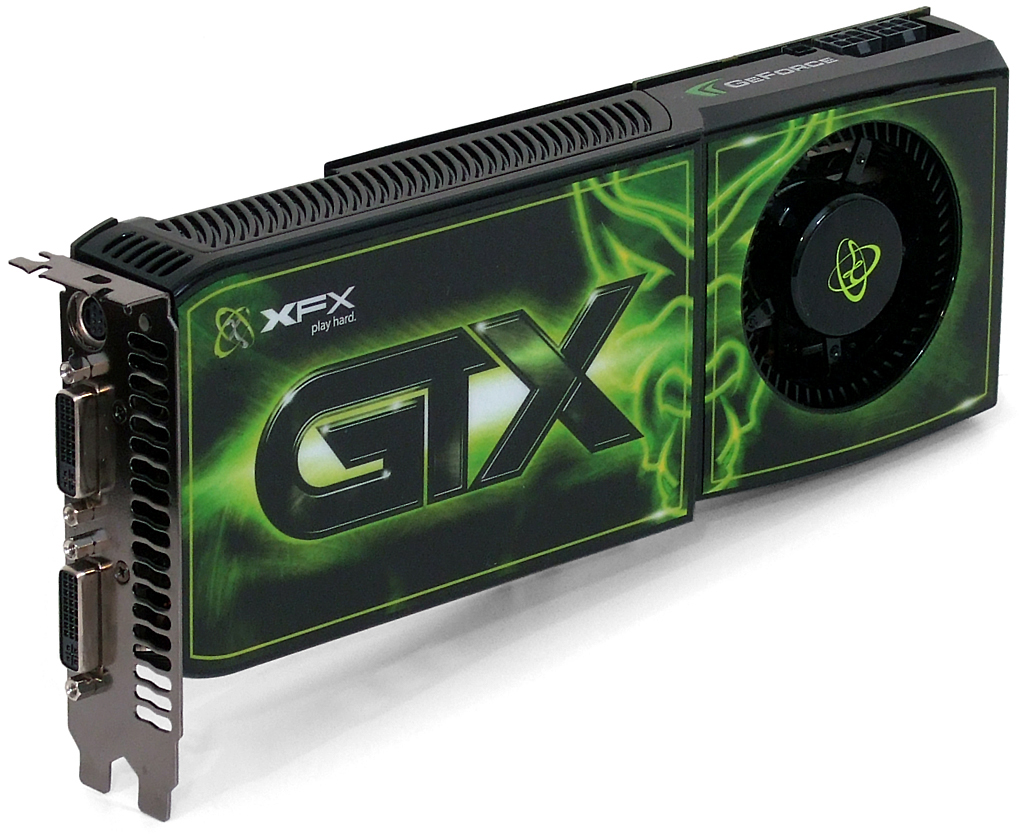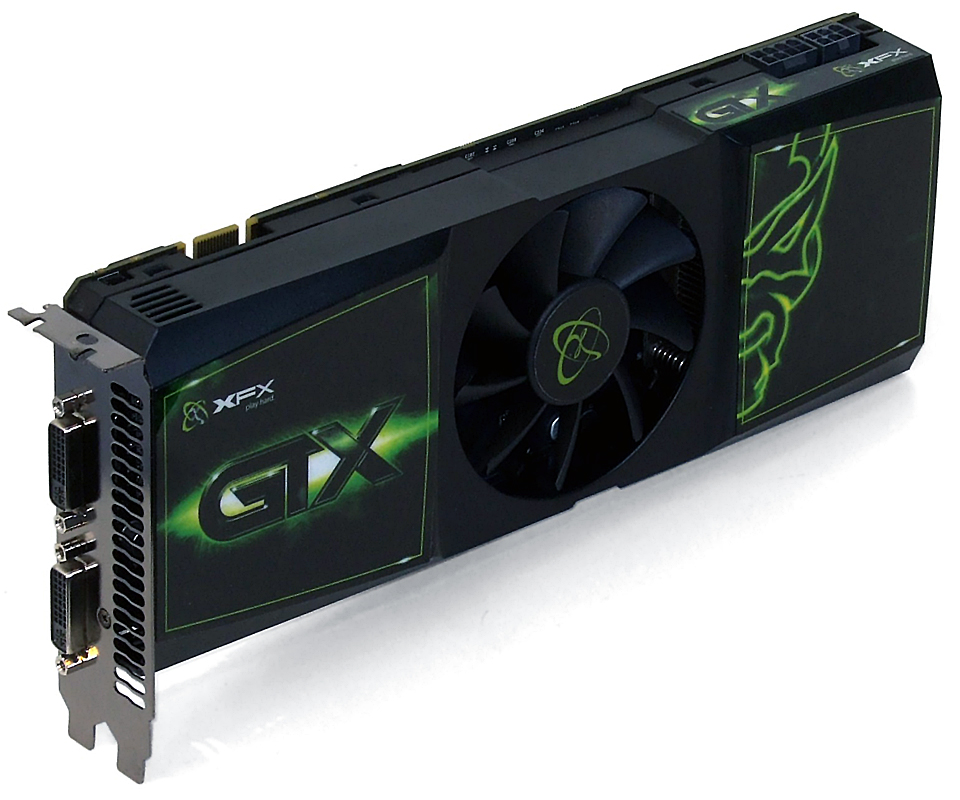GeForce GTX 285 Gets 2 GB: Gigabyte's GV-N285OC-2GI
Comparison Cards: When 1 GB Is Greater Than 1.8 GB
Standing in for the reference design 1 GB GeForce GTX 285 graphics card is our review sample from XFX. Originally overclocked to 670 MHz on the GPU, 1,508 MHz shaders, and GDDR3-2500, we dropped it to the same 660/1,505/2,400 settings of Gigabyte’s 2 GB card to more accurately evaluate the effects of Gigabyte’s memory increase.
Now that we had “one model down” from the 2 GB GeForce GTX 285, we wanted to go “one model up,” to see exactly where the card fits in the performance market. Since the GeForce GTX 285 is Nvidia’s best GPU, it would take a two-GPU card to beat it. Today’s test system came equipped with another XFX card, its single-PCB GeForce GTX 295.
Equipped with a total of 1,792 MB GDDR3-2016 memory, each GPU gets exactly half that amount. Each GPU uses the same data while sharing the graphics load, making the card act as a single 896 MB graphics unit.
The same issue occurs even in 3-way and Quad SLI systems, where the total amount of useable graphics memory is the same as that of one GPU. Thus, even if we were to put three 2 GB GeForce GTX 285 graphics cards in a system, it would act as a triple-GPU 2 GB graphics unit rather than a 6 GB array. Given this important clarification, splitting 1,792 MB across two graphics processors results in less application memory than a single-GPU 1 GB card.
Get Tom's Hardware's best news and in-depth reviews, straight to your inbox.
Current page: Comparison Cards: When 1 GB Is Greater Than 1.8 GB
Prev Page Wasn't 1 GB Already Enough? Next Page Test Settings-
twisted politiks ive had EVGA's GTX 285 for about two months now, nothing new in the memory departmentReply -
rambo117 wow... that was quite pointless, i was really expecting a good article but it was the same numbers basically, why not just have a single page with the average gains with 2gb vs 1gb (which was completely nonexistent anyways)Reply
-
astrodudepsu Well, all I can say is good try. Not some of your best work, but worth exploring nonetheless.Reply -
Crashman astrodudepsuWell, all I can say is good try. Not some of your best work, but worth exploring nonetheless.Reply
Tom's Hardware was hoping to find more 2560x1600 scenarios where the 2GB advantage would play out. When very few advantages were found, Tom's did the honest thing and published the numbers anyway.
I think you can take a lot from this article. I just spoke to a guy who asked "2GB or water cooling?" when looking at cards of the same price. He has a powerful water cooling loop, so the answer was easy. -
one-shot I think it is a great article. Too often people approach me thinking a larger frame buffer means extra performance. Actually, just recently a co-worker wanted to get a GTX 285 with 2GB of VRAM. Great article, keep it up!Reply -
SpadeM Just a quick question: Since the GTX285 is a high range card, those the same "1GB is enough" rule apply to mid range/low end cards?Reply
PS: I'm thinking slower GPU might benefit from more memory -
astrodudepsu CrashmanTom's Hardware was hoping to find more 2560x1600 scenarios where the 2GB advantage would play out. When very few advantages were found, Tom's did the honest thing and published the numbers anyway.Reply
Which is why I said it was worth exploring. I realize you wouldn't do all this work and NOT publish your results, as mundane as they may be. -
rambo117 it was quite informative and worth exploring like astrodude said. just wish that it was a little more 'exciting'.. idk, maybe an sli 2gb vs 1gb will prove to be possibley more interesting.Reply -
Hellbound If a card is going to cost $350-$400, and perform as much as %50 less than the car that costs $500....get the $500 card. You are already spending an insane amount for a card, might as well go all the way. As for me, I'm waiting for the DX11 cards to come out.Reply -
Crashman rambo117it was quite informative and worth exploring like astrodude said. just wish that it was a little more 'exciting'.. idk, maybe an sli 2gb vs 1gb will prove to be possibley more interesting.Reply
Three-way would have been best, but there's just not enough samples to go around.


